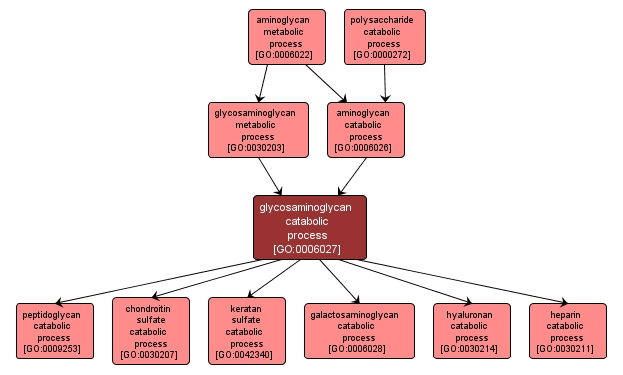GO TERM SUMMARY
|
| Name: |
glycosaminoglycan catabolic process |
| Acc: |
GO:0006027 |
| Aspect: |
Biological Process |
| Desc: |
The chemical reactions and pathways resulting in the breakdown of glycosaminoglycans, any one of a group of polysaccharides that contain amino sugars. |
Synonyms:
- glycosaminoglycan catabolism
- glycosaminoglycan breakdown
- glycosaminoglycan degradation
|
|

|
INTERACTIVE GO GRAPH
|














